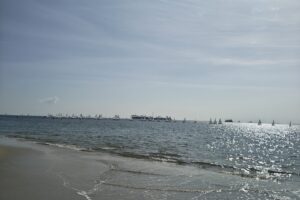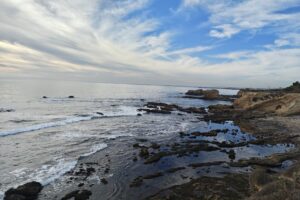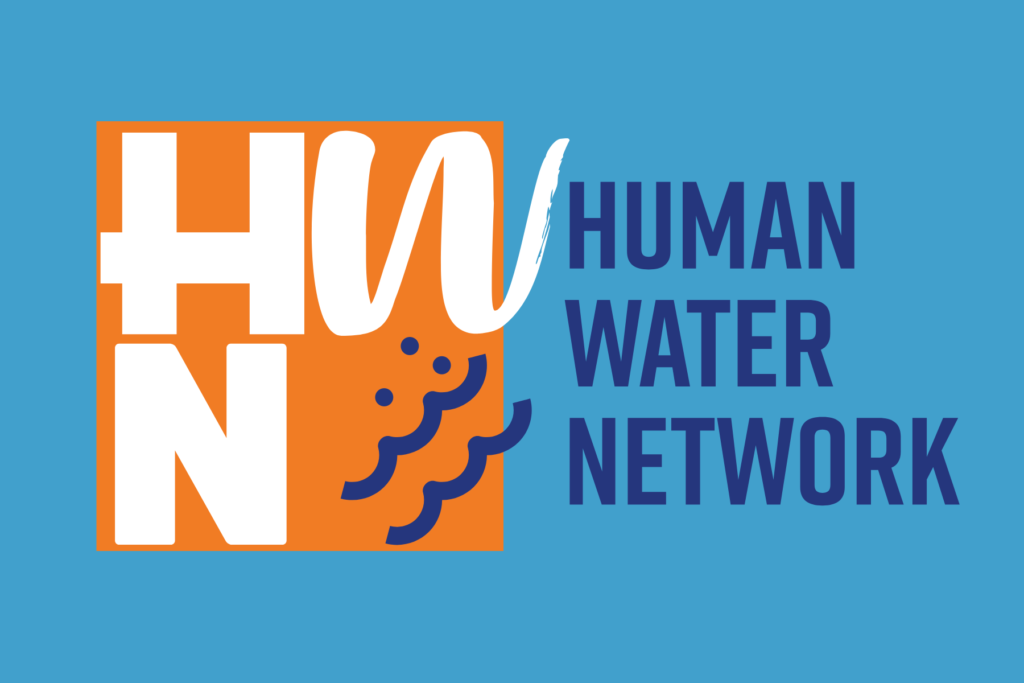The King Tides Rule!
The Benefits of King Tides on Tidelands and Marine Ecosystems
King Tides, the highest tides of the year, are a natural phenomenon that has long fascinated marine scientists, environmentalists, and ocean enthusiasts. While they often grab headlines for causing dramatic coastal flooding or revealing vulnerabilities in coastal infrastructure, King Tides also play a vital role in enriching tidelands and marine ecosystems. These extreme tides, which occur when the gravitational forces of the sun and moon align during perigee (the moon’s closest point to Earth, which happens about once a month), create dynamic conditions that benefit marine life, sediment transport, and ecosystem health.
Here’s a closer look at how King Tides contribute to the vibrancy and resilience of tidelands and marine environments:
1. Nutrient Redistribution
King Tides bring an influx of nutrient-rich seawater to coastal habitats, particularly estuaries and tidelands. This seawater is rich in elements like nitrogen, phosphorus, and potassium. During high tide, these waters wash over mudflats and marshes, delivering these vital nutrients that support plant growth and microbial activity. When the tide recedes, the returning waters redistribute organic matter and sediments across the ecosystem. This exchange of nutrients acts as a natural fertilizer, enhancing the productivity of primary producers like seagrass, algae, and phytoplankton, which form the foundation of the marine food web.
2. Habitat Expansion for Marine Life
The dramatic rise in water levels caused by King Tides temporarily expands the boundaries of aquatic habitats, giving marine species access to new feeding grounds. Coastal birds, crabs, fish, and shellfish all benefit from this brief yet crucial period. For instance, fish can forage in submerged marshlands. At the same time, shorebirds take advantage of the bounty left behind as the waters retreat. This cyclical access to food-rich areas can boost key species’ populations, supporting the region’s biodiversity.
3. Sediment Transport and Shoreline Resilience
King Tides are significant in sediment transport, a natural process essential for maintaining healthy tidelands. As water levels surge, sediments are moved from deeper parts of the ocean onto shorelines and estuaries. This process helps replenish beaches, build up mudflats, and maintain the structural integrity of salt marshes. Over time, this sediment redistribution can strengthen coastal ecosystems, making them more resilient to erosion and rising sea levels.
In addition to their ecological role, King Tides offers a natural glimpse into how coastal areas might look under future sea-level rise conditions. Monitoring sediment movement during these events provides scientists valuable data for modeling climate adaptation strategies.
4. Spawning and Breeding Opportunities
King Tides coincide with crucial breeding or spawning periods for some marine species. Higher water levels create ideal conditions for fish, crustaceans, and mollusks to lay their eggs or find mates in sheltered areas like mangroves and marshes. The tidal influx also carries larvae and juvenile organisms to nutrient-rich nurseries, where they can grow and develop before venturing to open waters.
5. Enhanced Biodiversity in Intertidal Zones
King Tides periodically flood intertidal zones, alternately submerged and exposed areas. This creates a unique, dynamic environment where diverse organisms can thrive. High tides allow species like anemones, barnacles, and mussels to extend their feeding activities, while low tides expose these areas to terrestrial predators and scavengers. This ebb and flow of resources sustains a delicate balance, fostering a rich biodiversity that benefits the entire ecosystem.
6. Opportunities for Coastal Restoration
Beyond natural processes, King Tides offers a unique opportunity for human-led restoration efforts. For example, coastal scientists and conservationists can use these high-water events to assess the health of marshlands, identify areas prone to flooding, and test the effectiveness of artificial reefs or living shorelines. By understanding the impacts of extreme tides, we can design better strategies to protect and restore these critical habitats.
7. Educational and Scientific Insights
Finally, King Tides serve as a living laboratory for researchers and the general public, offering a wealth of educational and scientific insights. Community-based initiatives, like King Tide monitoring programs, invite citizens to document these events through photography and data collection. Such projects not only raise awareness about the importance of marine ecosystems but also contribute valuable information for climate resilience planning, enlightening us about the intricate workings of our planet’s marine environments.
A Natural Spectacle with Ecological Significance
While the visual drama of King Tides often steals the spotlight, their ecological benefits deserve equal recognition. These extreme tides demonstrate the interconnectedness of oceanic and coastal systems by nourishing tidelands, expanding habitats, and promoting biodiversity. They remind us of the ocean’s immense power to shape and sustain life, offering lessons in both humility and stewardship.
As we navigate a changing climate and rising seas, King Tides are more than just natural spectacles—they are vital opportunities to learn, adapt, and appreciate the intricate systems that sustain our planet’s marine environments. By understanding their benefits and the challenges they pose in the context of climate change, we can work to protect and preserve the ecosystems they enrich, ensuring a thriving ocean for generations to come.





